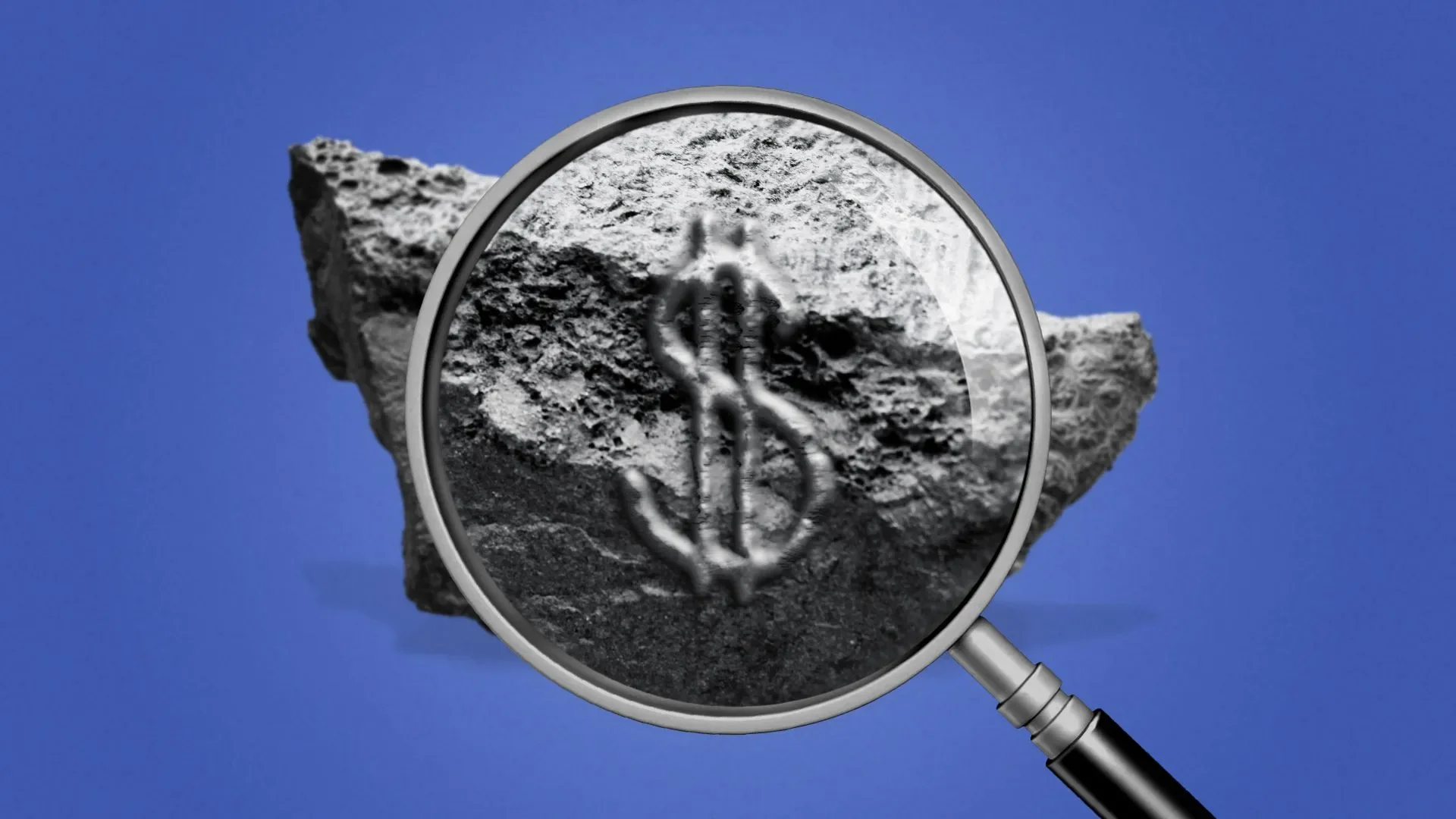The Reality of China's Mineral Advantage
The reality is stark: 100% of processed spherical graphite comes from China today, and even successful Western mining projects remain dependent on Chinese refinement capabilities. © Under Licence: Visual China Group (VCG)
❮ VSG News
OPINION
Early Movers and Necessary Negotiations: The Structural Realities of Critical Minerals
★ Article by Arno Saffran, Thu 13 Nov, 2025The Misdiagnosis of Market Dominance
The recent U.S. House committee report alleging Chinese market manipulation in critical minerals reveals more about Western strategic anxiety than market realities. While Washington decries what it perceives as price interference, industry leaders understand China's dominance represents not market distortion but the fruits of early-mover advantage—a lead so substantial that it now defines the very architecture of global mineral supply chains.
The Architecture of Advantage
China's position as processor of 90% of global rare earths, 95% of refined graphite, and 60-70% of lithium and cobalt didn't emerge overnight. This dominance stems from strategic decisions made decades ago, when Western nations largely ignored these sectors. As one mining executive acknowledged at a recent industry summit, "We are blaming China right now, but they had a long-term view that we didn't have 15-20 years ago."
The House report's focus on pricing mechanisms misses this fundamental point. When China began building its processing capacity in the 1990s and early 2000s, global commodities were largely driven by Western capital markets focused on quarterly returns. China invested through economic cycles, creating what analysts now recognize as "full-spectrum industrial architecture"—integrated systems from mining to processing to manufacturing.
The Efficiency Dividend
Forward-thinking executives understand that confrontation cannot overcome structural advantages built over generations. The most successful partnerships leverage Chinese efficiency rather than attempting to replicate it. As Ivanhoe Mines found through its collaboration with Zijin Mining on the Kamoa-Kakula copper project, Chinese partners have been "the most efficient allocators of capital to the mining sector for the past 15-20 years."
The data supports this assessment: projects that might take Western companies a decade to develop are regularly operational within five years through Chinese partnerships. This efficiency stems not from market manipulation but from deeply embedded expertise and integrated supply chains that reduce development timelines by 30-50%.
The Cost of Decoupling
The House report's recommendation for price controls and expanded oversight misunderstands market dynamics. As Syrah Resources CEO Shaun Verner notes, while 65% of mined graphite comes from China, "100% of processed spherical graphite comes from China today." This processing dominance creates inevitable pricing influence—not through manipulation but through sheer market share.
The alternative—building parallel supply chains—faces staggering cost disadvantages. Industry data indicates capital costs for mining and refining projects outside China average 50% higher, with development timelines extending 40-60% longer. The Indonesian experience proves instructive: by embracing Chinese expertise rather than excluding it, Indonesia transformed from minor player to the world's largest refined nickel producer in under a decade.
Navigating the Inevitable
The most sophisticated industry players recognize that negotiation, not confrontation, defines the sustainable path. IGO CEO Michael Nousa, whose company operates the massive Greenbushes lithium mine in partnership with China's Tianqi Lithium, captures this reality: "You have to have a degree of pragmatism. Ultimately, the transition cannot occur without China."
Rather than alleging price manipulation, Western policymakers might better serve their constituents by understanding that China's position reflects early investment in technologies and infrastructure that the West neglected. The challenge isn't overcoming market distortion but negotiating access to ecosystems built through disciplined long-term strategy.
As the energy transition accelerates, the enterprises that thrive will be those that approach China's structural advantages with commercial pragmatism rather than political rhetoric—recognizing that in critical minerals, early movers don't just lead the race; they define the terms of engagement.
CN
对市场主导地位的误判
近期美国众议院委员会指控中国操纵关键矿产市场的报告,更多暴露了西方的战略焦虑而非市场现实。当华盛顿谴责其所谓的价格干预时,行业领袖们清醒地认识到,中国的主导地位并非市场扭曲,而是先发优势的必然成果——这一优势如此显著,已然重新定义了全球矿产供应链的基本架构。
优势建构的逻辑
中国占据全球90%稀土、95%精炼石墨及60-70%锂钴加工能力的地位绝非偶然。这一主导地位源于数十年前西方普遍忽视该领域时的战略抉择。正如一位矿业高管在近期行业峰会上坦言:"我们现在指责中国,但他们在15-20年前就具备了我们所缺乏的长远眼光。"
国会报告对定价机制的过度关注,恰恰忽略了这一本质。当中国在1990年代至21世纪初大力建设加工能力时,全球大宗商品正由追逐季度回报的西方资本主导。而中国穿越经济周期的持续投入,构建了如今被分析师称为"全频谱产业架构"的体系——从采矿到加工再到制造的完整生态。
效率红利的价值
具有远见的管理者深知,对抗无法瓦解历经数代构建的结构性优势。最成功的合作模式在于善用中国效率而非简单复制。艾芬豪矿业与紫金矿业合作开发卡莫阿-卡库拉铜矿的案例证明,中国伙伴堪称"过去15-20年间矿业领域最高效的资本配置者"。
数据支撑这一判断:西方企业需十年建成的项目,通过中国合作可在五年内投产。这种效率并非来自市场操纵,而是源于深厚的技术积淀与产业链协同,使开发周期缩短30-50%。
脱钩代价的警示
国会报告建议的价格管制与加强监管,实则误解了市场运行规律。正如Syrah资源公司CEO肖恩·弗纳指出,虽然65%石墨原料产自中国,"但当前100%的球形石墨加工均来自中国"。这种加工领域的绝对优势必然形成定价影响力——并非通过操纵,而是纯粹的市场份额。
构建平行供应链的替代方案面临惊人成本劣势。行业数据显示,中国以外矿产开发项目的资本支出平均高出50%,建设周期延长40-60%。印度尼西亚的实践颇具启示:通过接纳而非排斥中国 expertise,该国在十年内从次要角色跃升为全球最大精炼镍生产国。
必然之路的航向
最精明的行业参与者清醒认识到,可持续之道在于谈判而非对抗。IGO公司CEO迈克尔·诺萨道破天机:"必须保持务实态度。最终,没有中国参与这场转型不可能实现。"其公司与中国天齐锂业合作运营着全球最大的格林布什锂矿。
西方政策制定者与其指控价格操纵,不如引导各方理解中国地位源自早期对技术与基础设施的战略投入——这些恰是西方曾经忽视的。真正的挑战并非克服市场扭曲,而是如何通过谈判接入经长期战略布局构建的产业生态。
随着能源转型加速,未来的赢家将是那些以商业务实而非政治辞令对待中国结构性优势的企业——他们深知在关键矿产领域,先发者不仅领跑比赛,更定义了游戏规则。
References
How relevant and useful is this article for you?
★ ★ ★ ★ ★ 74
ABOUT THE AUTHOR(S)
— Arno Saffran
Arno developed his approach through roles in client development (KPMG) and strategic commercial engagement (affiliated with advisories including Hakluyt), focusing on complex industrial and energy sectors.
VSG works across the extractive value chain, positioning people who form the critical bridge to early-stage relationships and commercial access in complex markets.
